Tractors are essential pieces of equipment in the agricultural industry, and safety should always be top of mind when working with them.
With tractors becoming increasingly sophisticated over time, it can become difficult to keep up with all their features and safety protocols.
But don’t worry! In our guide, we’ll make sure you’re armed with the right knowledge!
Learn how to safely operate, store and maintain your tractors to guarantee an accident-free environment for everyone involved in agriculture.
Take away key points:
- Tractor safety standards are mandatory to prevent severe injuries and tractor fatalities.
- The most common causes of injuries and fatalities include rollovers, runovers, improper equipment, lack of ROPS and seatbelts, etc.
- Ensure you’re taking all security measures to enhance stability and ease of use, to prevent injuries and fatal consequences.
Table of Contents
- Preventing tractor accidents & keeping you safe: Best standards
- Improving tractor safety & protection
- FAQs
- What is basic tractor safety?
- What are the biggest hazards when driving a tractor?
- How do most tractor accidents happen?
- What are the safety precautions a tractor driver must do?
- Does the tractor supply have safety goggles?
- How to test a neutral safety switch on a tractor?
- How do you bypass the safety switch on a New Holland tractor?
- Is it safe for pregnant women to drive tractors?
- How old do you have to be to take tractor safety?
- When is it safe to pass a tractor-trailer near the crest of a hill?
- What would consider an older tractor to be less safe to operate than a new tractor?
- Summary
Preventing tractor accidents & keeping you safe: Best standards
Read our guide below for a better understanding of when and how tractors can be dangerous farming equipment.
Ensure you take all safety measures and precautions to make the best use of machinery. This way, you will ensure the best protection while working.
1. Most common tractor accidents
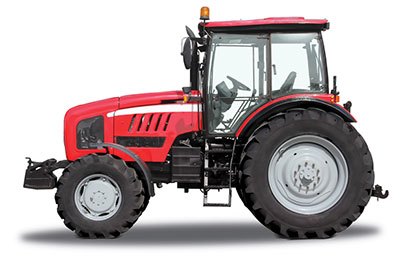
Tractor accidents are a major cause of injury and death in the farming industry. Several types of tractor hazards can occur, including rollovers, runovers, and collisions.
Rollovers are the most common type of tractor accident, and they happen when a tractor flips over due to an imbalance or uneven terrain. Rollovers often include tractor overturns, caused by taking sharp turns at high speeds.
To avoid rollovers, farm workers must drive slowly on uneven terrain and take turns carefully. Additionally, using rollover protective structures (ROPS) can help protect operators in case of a rollover.
Runovers occur when tractors have ignition switches located in areas that are easy to access, such as the foot pedals. Runovers occur when the operator falls off the tractor while it is still running.
To prevent this type of accident, it is important to make sure that all safety features are engaged before machinery operations. Make sure that the brake is engaged and that all passengers have their seatbelts fastened.
It is also important to be aware of your surroundings while operating a tractor so that you can react quickly if someone or something enters your path unexpectedly.
Collisions can happen when two tractors collide with each other or with another object. Collisions between agricultural tractors and other vehicles or objects can cause serious damage and injury if not prevented properly.
To avoid collisions between two objects, operators should always be aware of their surroundings and or a stationary object when managing machinery/. They must take steps to ensure that they are visible to other drivers on the roadways or pathways they are traveling on.
Additionally, operators should never exceed speed limits or operate their agricultural tractors recklessly to reduce the risk of an accident occurring due to negligence or carelessness.
Additional causes of tractor accidents
Other tractor accidents include operator error, mechanical failure, and environmental hazards.
Operator error can range from lack of experience or training to fatigue or intoxication.
Mechanical failures can be caused by improper maintenance or faulty equipment such as shear points, wrap points, and similar equipment where a pant leg, long hair, and other materials can cause damage.
Equipment malfunctions can lead to serious injuries or even death if not addressed quickly. Operators should always be aware of any potential damage associated with their equipment before using it. If they notice damaged parts, these must be replaced immediately.
To prevent this type of accident, it is important to regularly inspect and maintain all equipment and other materials used in farming operations.
Stored energy hazards occur in springs, compressed air, and hydraulics. The sudden or unexpected pressurization and depressurization of all of these systems result in crushing.
Environmental damage such as wet surfaces, uneven terrain, and poor visibility can also contribute to tractor accidents.
Preventing tractor accidents is essential for keeping farmers and farm workers safe. It is important to use rollover protective structures (ROPS) on tractors to help prevent rollover accidents.
Additionally, it is important to make sure that all safety features on the tractor are functioning properly before operating it and to be aware of your surroundings while driving a tractor.
Of course, you must be more than just “lucky” when it comes to avoiding rollover tractor accidents. Taking proactive steps, such as using ROPS and being aware of your environment can help reduce the risk of serious injury or death from a tractor accident.
2. Beware of the numbers: Occupational accident statistics
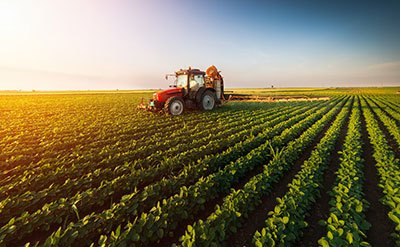
Tractor incidents are unfortunately a common occurrence in the farming industry.
According to the Centers for Disease Control and Prevention – CDC, tractor accidents are the leading cause of injury and tractor fatalities among farmers and farm workers.
The most common type of tractor accident is when a tractor rolls over, but runovers and collisions can also occur. More than half of deaths occurring on the farm are a result of tractor roll-over accidents, leading to nearly 100 deaths per year.
Farmers need to be aware of the risks associated with operating tractors and take steps to prevent these types of accidents from happening. This includes using rollover protective structures (ROPS) when available, as well as making sure that all safety features are in working order before operating a tractor.
Additionally, farmers need to be aware of their surroundings and take extra caution when operating around other people or animals. By taking these precautions, we can help reduce the number of occupational accident statistics in tractors and keep our farms safe for everyone involved.
3. Safety precautions to avoid serious injury
Here are some of the basic guidelines to ensure you’re using your tractor properly:
The only safe place for sitting is in the driver’s seat
– Sitting on a tractor can be unsafe for those not in the driver’s seat, as sudden bumps or turns can easily result in them being thrown off. It is important to never ask for a ride on a tractor or other farm equipment, as it could lead to serious injuries.
– Even if the vehicle is not running, jumping from a tractor can still be dangerous due to muddy boots or loose clothing that may cause the jump to go awry.
PTO shaft entanglement has fatal consequences
PTO shafts are a common feature of tractors and can be used to transfer power to other machines such as manure spreaders. These shafts spin rapidly at 9-15 rotations per second and can cause serious injury if not protected by a safety shield.
Additionally, if the rear wheels cannot rotate and move the tractor forward, the front will become elevated very quickly and lead to a rollover in under a second. It is important to ensure that all safety shields are in place when managing a tractor.
Typical causes of rearward tractor turnovers
Rearward tractor turnovers may occur in the following situations:
– The tractor is stuck in mud or snow.
– Chains, boards, or other devices prevent machinery front and rear wheels from turning.
– The tractor is going up a hill that is too steep.
– Quickly releasing the clutch in a low gear with the vehicle engine running at a high speed.
– A load is hitched above the drawbar of the tractor.
Typical causes of sideways tractor rollovers
Sideway rollovers may occur when:
– A tractor is driven on a hillside that is too steep
– When the front-end loader is too high for a given load on a hill or when turning,
– The tractor is driven too close to the edge of a roadside ditch or other steep slope.
4. Is a tractor equipped with a seat belt better than models without it?
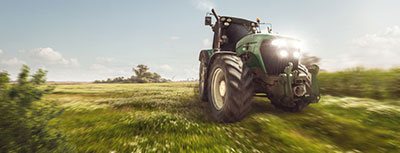
Seat belts are an essential safety feature for any vehicle, including tractors. A tractor equipped with a seat belt is much safer than heavy machinery without one.
A seat belt helps keep the operator secure in the event of an accident or sudden stop. Equipped seat belts also help to reduce the risk of serious injury or death by keeping the operator from being thrown from the tractor and into other objects.
Additionally, seat belts can help prevent operators from being ejected during rollover accidents, which can be particularly deadly during a tractor operation.
The National Highway Traffic Safety Administration (NHTSA) estimates that seat belts reduce the risk of death by 45% and cut the risk of severe injuries by 50%.
In addition to providing protection in case of an accident, wearing a safety belt while operating a tractor also helps to keep operators alert and focused on their work.
By remaining securely fastened in their heavy machinery seats, operators are less likely to be distracted and more likely to stay aware of their surroundings. So, seatbelt systems provide advanced protection and guards for better control and injury prevention.
Overall, having a safety belt on your tractor is essential for ensuring your safety while operating the machine. Not only does it provide protection in case of an accident or sudden stop, but it also helps keep you alert and provides better control of your work.
5. Do you need protective equipment for a tractor operation?
When using a tractor, it is important to wear protective equipment and other safety devices such as fitted pants, tuck in any loose shirt tails, and avoid wearing scarves.
Additionally, it is important to wear sturdy work shoes or boots with non-slip soles. It is also recommended to use a rollover protective structure (ROPS) and seatbelt whenever and wherever applicable in your machine.
Improving tractor safety & protection
To improve tractor-operator safety, follow the steps below:
– Always mount and exit the tractor on the left side to avoid access to the controls.
– Install and use an approved cab or ROPS (Roll Over Protective Structure) fitted with seatbelt protection.
– If there is a risk of falling objects, fit a FOPS (Fall On Protective Structure).
– Wear hearing protection as not all tractor cabs are soundproof.
– Ensure the starter keys are removed when tractors are not in use and have up-to-date maintenance schedules.
– Follow safe maintenance and jacking procedures in your operator’s manual
– Ensure the operator is properly trained for each type of tractor work
– Adjust the seat so all controls are safely and comfortably reached
– Keep guards in place including the PTO shaft (Power take-off)
– Only operate the self-starter from the operator position
– No extra rider should be in the machine. Sudden bumps or quick turns can cause severe injuries to all extra riders.
1. When operating the tractor?
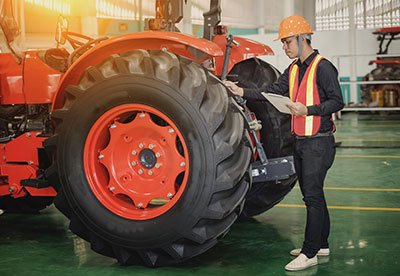
– Adjust the tractor speed to slow enough to retain control of unexpected events.
– Reduce speed before turning or applying brakes and watch out for rocks, logs, ditches, depressions, and embankments. Be careful of crush points, tractor overturns and similar hazards destroying your machinery and users.
– For greater safety on steep slopes without trailed implements, reverse up the slope rather than going forward.
– Always use the clutch gently when going uphill or towing your machine
– Use as wide a wheel track as possible on hillsides and sloping ground
– You should cautiously descend slopes in low gear using the motor as a brake.
– Never mount or dismount from a moving tractor. Moving parts can end up fatally
– Ensure that the parking brake is on and operating effectively before dismounting other equipment
– Take short breaks regularly when working long hours.
2. When towing tractor implements
– Attach tractor implements and other equipment according to the manufacturer’s instructions
– Always fit tractor implements to the draw bar or mounting points provided
– Never modify, alter, or raise the height of the draw bar unless specified by the operator’s manual
– Regularly check safety pins on towed lift-wing tractor implements for wear
– Ensure all guards are in place before machinery operations
– Never hitch above or around the axle housing, center line of the rear axle, or to the top link pin.
– Adjustments and work must not be done while tractor implements are in motion
– Use different materials, such as boards, chains, etc. to improve the traction of wheels
– Attach tractor implements only when the PTO shaft is guarded
– When parking your machinery, always lower the three-point linkage and towed implement.
3. Avoiding strain injury
– Adjust the tractor seat for comfort and back support when buying machinery, to ensure comfortable and safe tractor seating.
– Consider tractor seat depth, height, tilt, fore and aft movement, backrest angle and height, padding, partial pivoting (for long periods of looking behind), and vibration-absorbing suspension.
– Dismount the equipment every hour or so for 5-10 minutes of activity
– Plan for the next tractor with suitably low steps, hand grips, ample doorway/cab space, and a safe mounting platform.
– Dismount by climbing down (not jumping) with hand grips and foot holds provided.
FAQs
What is basic tractor safety?
Tractor safety is the practice of operating a tractor safely and responsibly. It involves:
– Following all safety instructions provided by the manufacturer,
– wearing protective gear such as a seatbelt, ROPS (Rollover Protective Structure), and other appropriate clothing,
– being aware of your surroundings at all times,
– driving slowly,
– firmly attaching the seatbelt,
– starting and stopping the tractor slowly,
– not allowing children or adults to play near running tractors or machinery,
– reading and following directions in the operator’s manual,
– learning all you can about how to safely operate a tractor.
What are the biggest hazards when driving a tractor?
The biggest damage types include: overturns, runovers, power take-off entanglements, older tractors lacking ROPS
How do most tractor accidents happen?
The incidents mostly happen due to a lack of safety standards. Tractors are top-heavy, making rollover incidents easier.
In addition, they can be caused by improper or poor hitching, road or field holes, excessive speed, steep inclines, or driving too close to the ditches.
What are the safety precautions a tractor driver must do?
The most important precaution is to:
– Always sit in the driver’s seat while operating the tractor.
– To read and follow directions in the equipment manual, use a Roll Over Protective Structure (ROPS) and seatbelt when applicable
– Drive slowly, and be aware of your surroundings at all times
– Firmly attach the seatbelt
– Start and stop the tractor slowly
– Never allow children to play where tractors are running.
– It is important to know your tractor, its implements, and how they work before operating them.
Following these safety tips can help prevent accidents on the job site.
Does the tractor supply have safety goggles?
Yes, Tractor Supply Co. carries a variety of safety goggles for all your needs. From clear lenses to anti-fog and chemical splash styles, you can find the right pair of goggles to keep your eyes safe and protected.
At Tractor Supply Co., you can find Safety Glasses, DeWALT Concealer Safety Goggles, TradesPro Safety Glasses, Notch Mesh Safety Glasses, and other different models necessary for the best safety operations.
How to test a neutral safety switch on a tractor?
The tractor should be placed on level ground and the keys removed from the ignition. It is then necessary to locate the neutral safety switch, which can usually be found in the service manual.
Once located, a multimeter should be used to check for continuity when the switch is in each position. If there is no continuity in the neutral position, then it may be necessary to adjust or replace the switch.
Additionally, it may be possible to test the switch by connecting a jumper wire from the battery terminal of the solenoid to its small terminal and briefly connecting them.
How do you bypass the safety switch on a New Holland tractor?
The safety switch on a New Holland tractor can be bypassed by lifting the seat and disconnecting the switch connector. Then, install a remote toggle switch in its place. This will allow you to control the tractor without having to use the safety switch.
It is important to wire the toggle switch under the seat for safety purposes. Additionally, some models may require you to bypass the emergency brake as well.
Is it safe for pregnant women to drive tractors?
It is generally safe for pregnant women to drive tractors, as long as they are comfortable and take safety precautions. However, it is important to note that vibrations from the tractor may be a problem and can affect fertility in some cases.
Additionally, pregnant women should avoid lap-only seat belts instead of regular seat belts with lap and diagonal belts, as these can cause serious abdominal injuries.
How old do you have to be to take tractor safety?
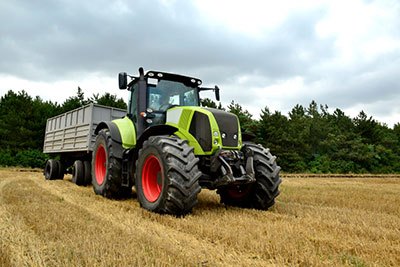
The age boundaries depend on the state.
For instance, you are allowed to operate when you’re between 12 and 16 years old in Wisconsin. In addition, the law in Nebraska allows teens of 14 and 15 years to operate tractors.
So you should check with the local laws and see the lower age limit for tractors and operations.
When is it safe to pass a tractor-trailer near the crest of a hill?
It is best to wait until you have a clear view of both lanes before attempting to pass.
Additionally, make sure you are traveling at a safe speed and maintain an appropriate distance between your vehicle and the truck.
What would consider an older tractor to be less safe to operate than a new tractor?
Older tractors can be less safe to operate than newer tractors for a variety of reasons.
These include a lack of ROPS (Rollover Protective Structures) and seat belts, a seat without arms and backrests, power take-off entanglement, a high center of gravity, and narrow front-end tractors that are less stable.
Additionally, older tractors may not have the same safety features as newer models such as rollover protection which can help prevent serious injuries or death in the event of an overturn.
Summary
Farmers and other tractor laborers must take extra care when working around tractors, as they can be dangerous and powerful.
Although tractors may be useful for indoor and outdoor tasks, keeping up with safety regulations is imperative to ensure the tractor operator is adequately equipped.
Even though machine malfunctions may occur, having an understanding of the safety protocols surrounding tractors will make these potential problems easier to handle. Therefore, it’s crucial for those working outside on tractors to take full advantage of preventive measures.
